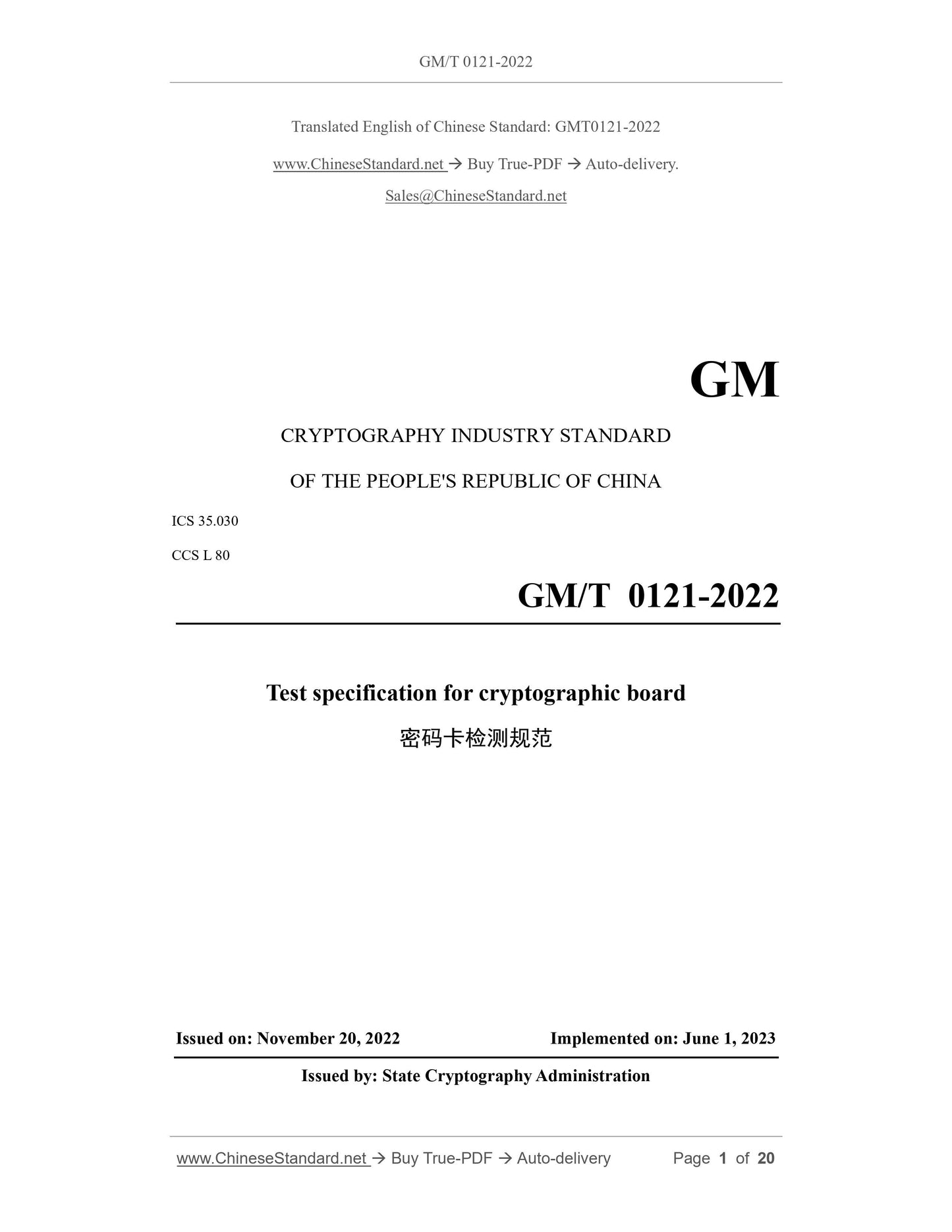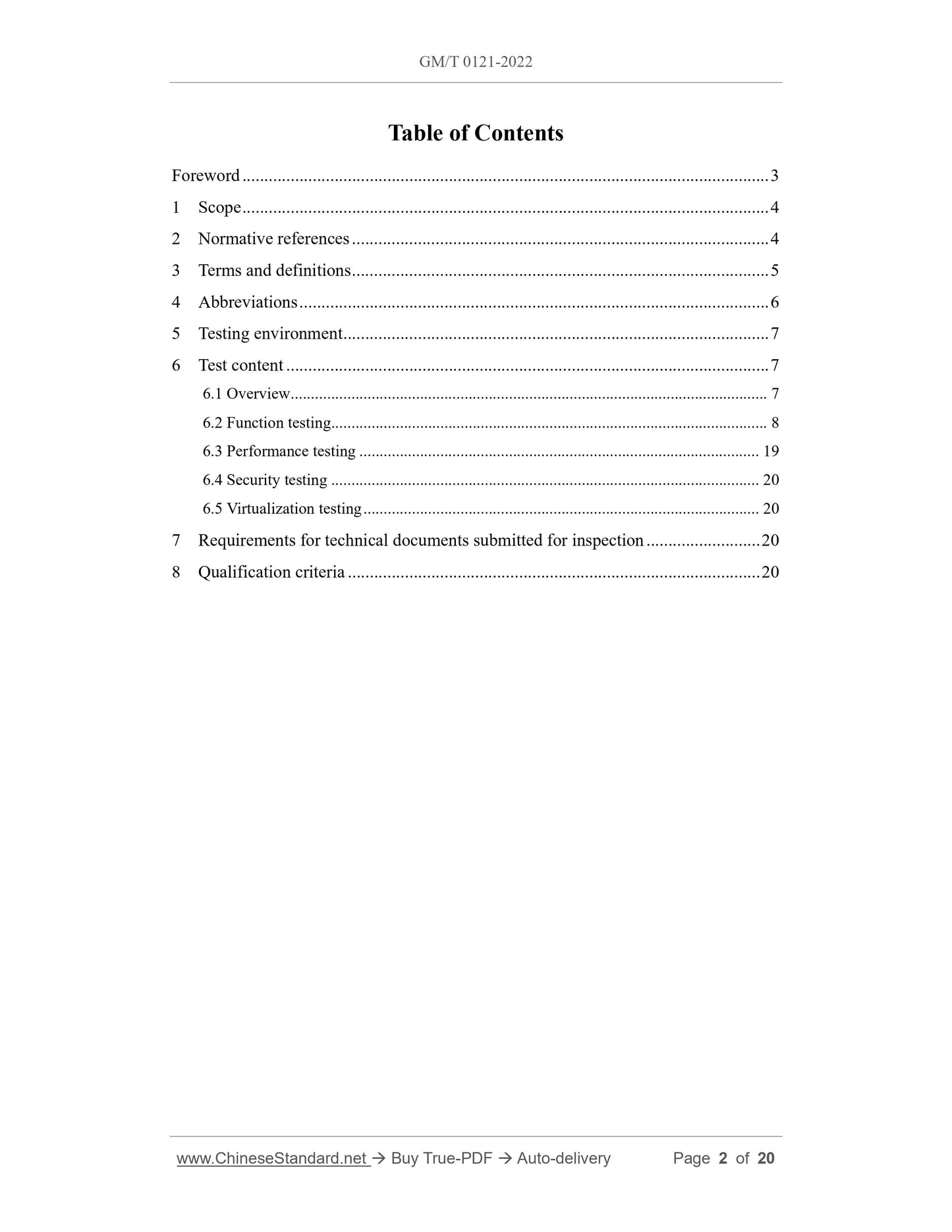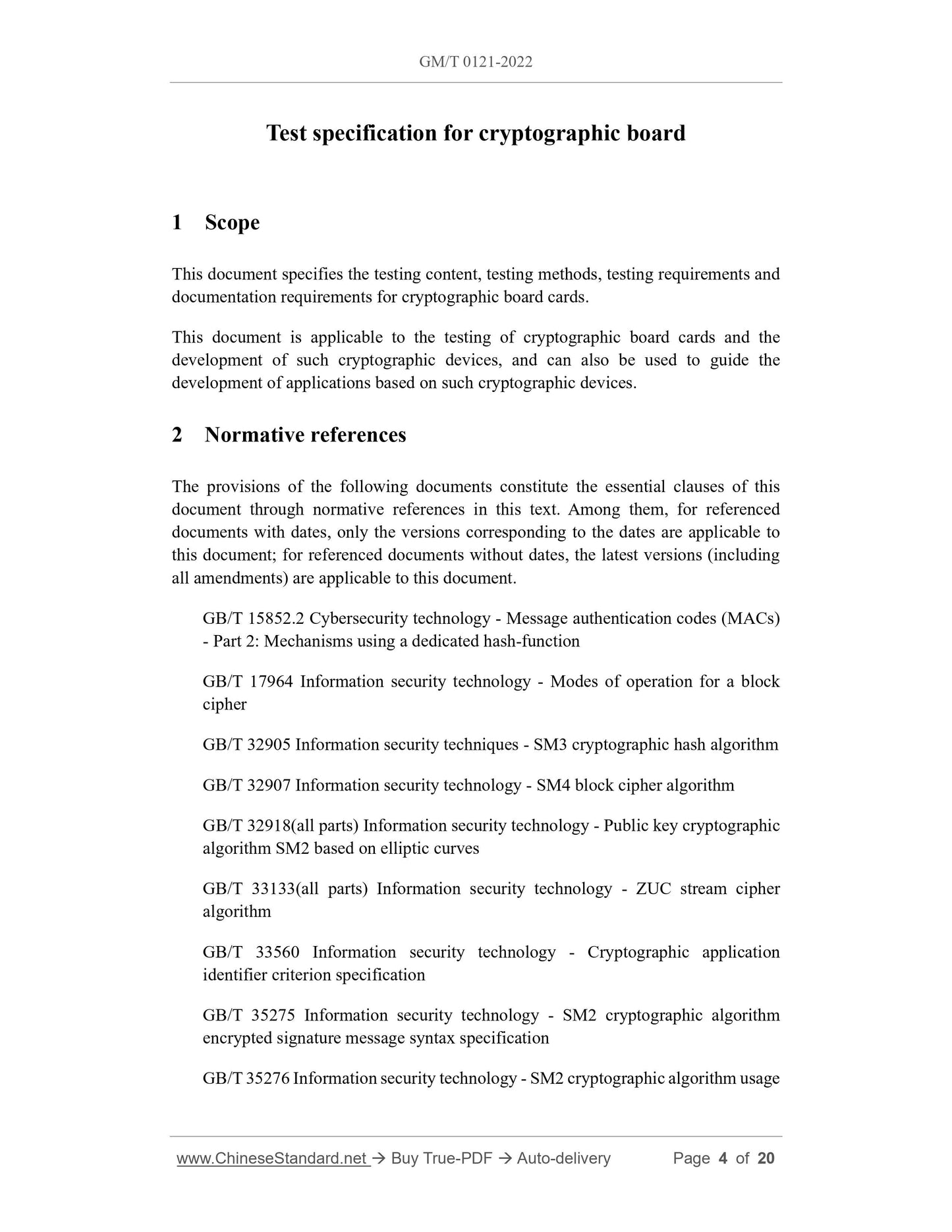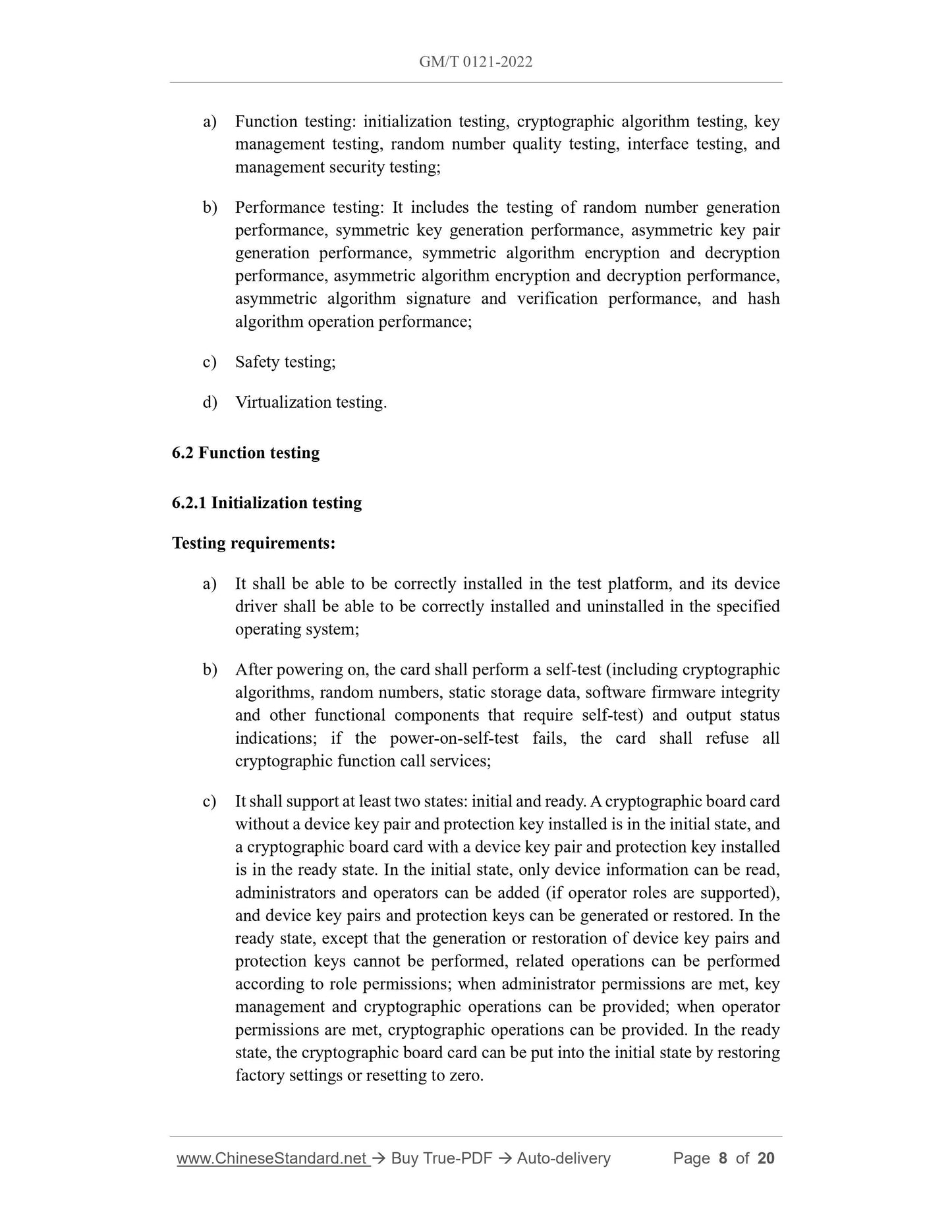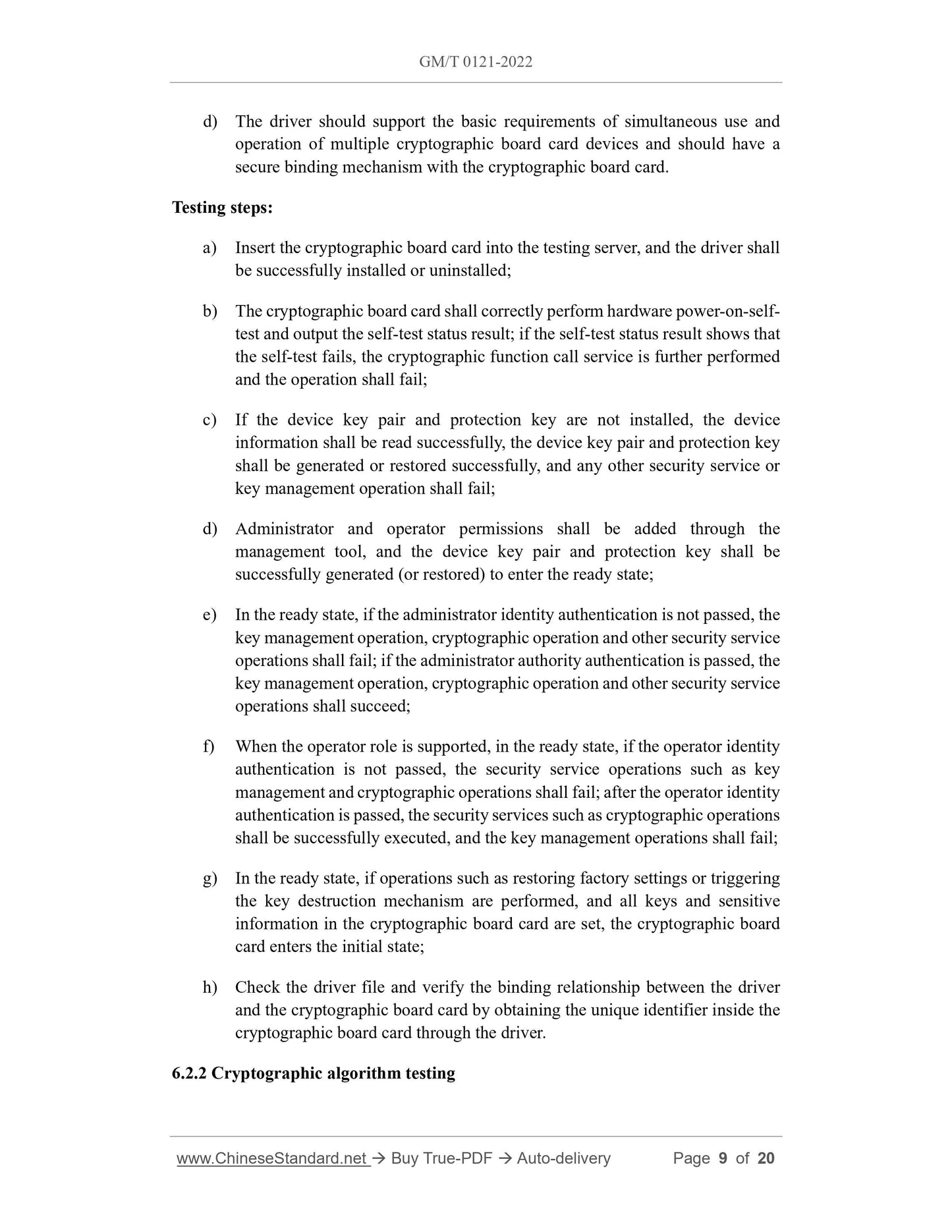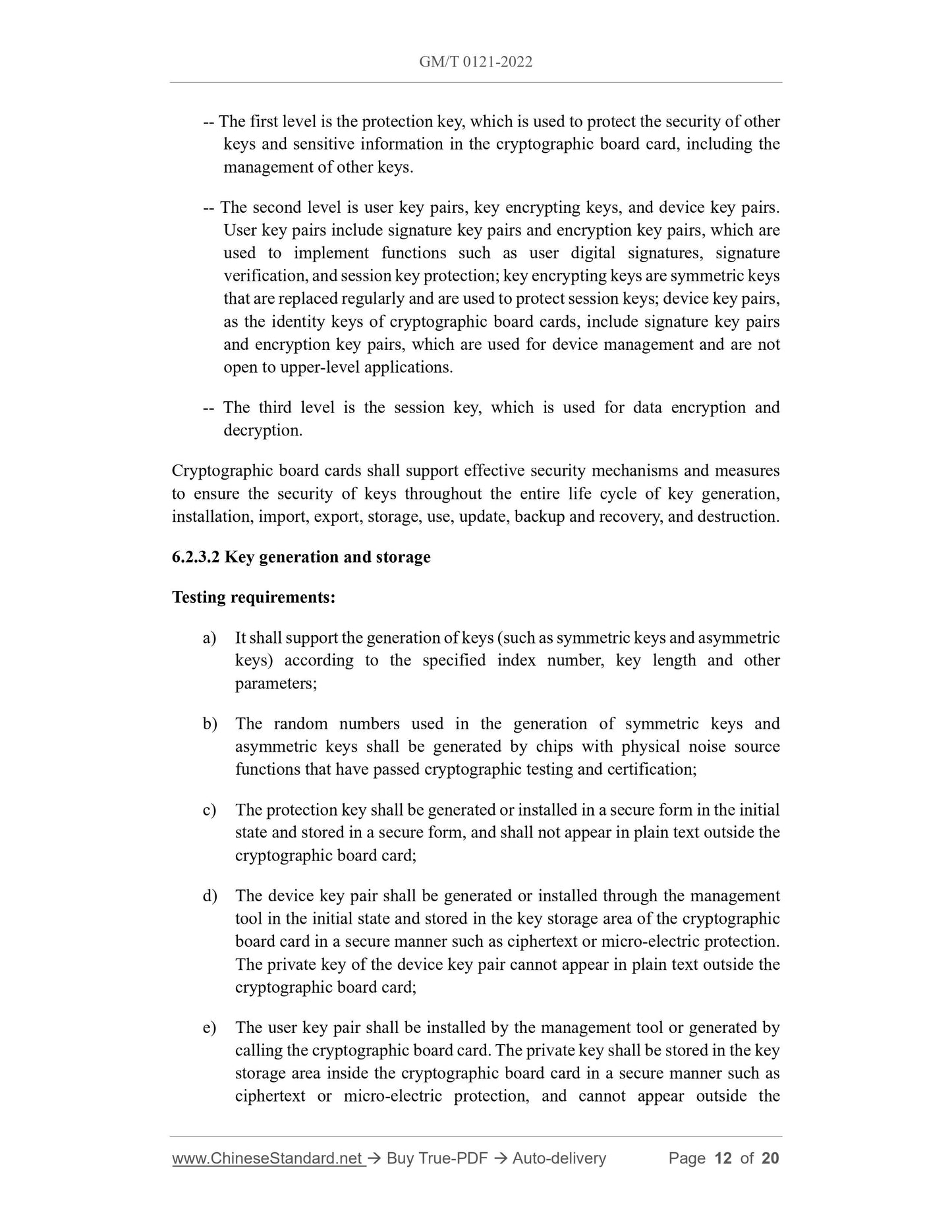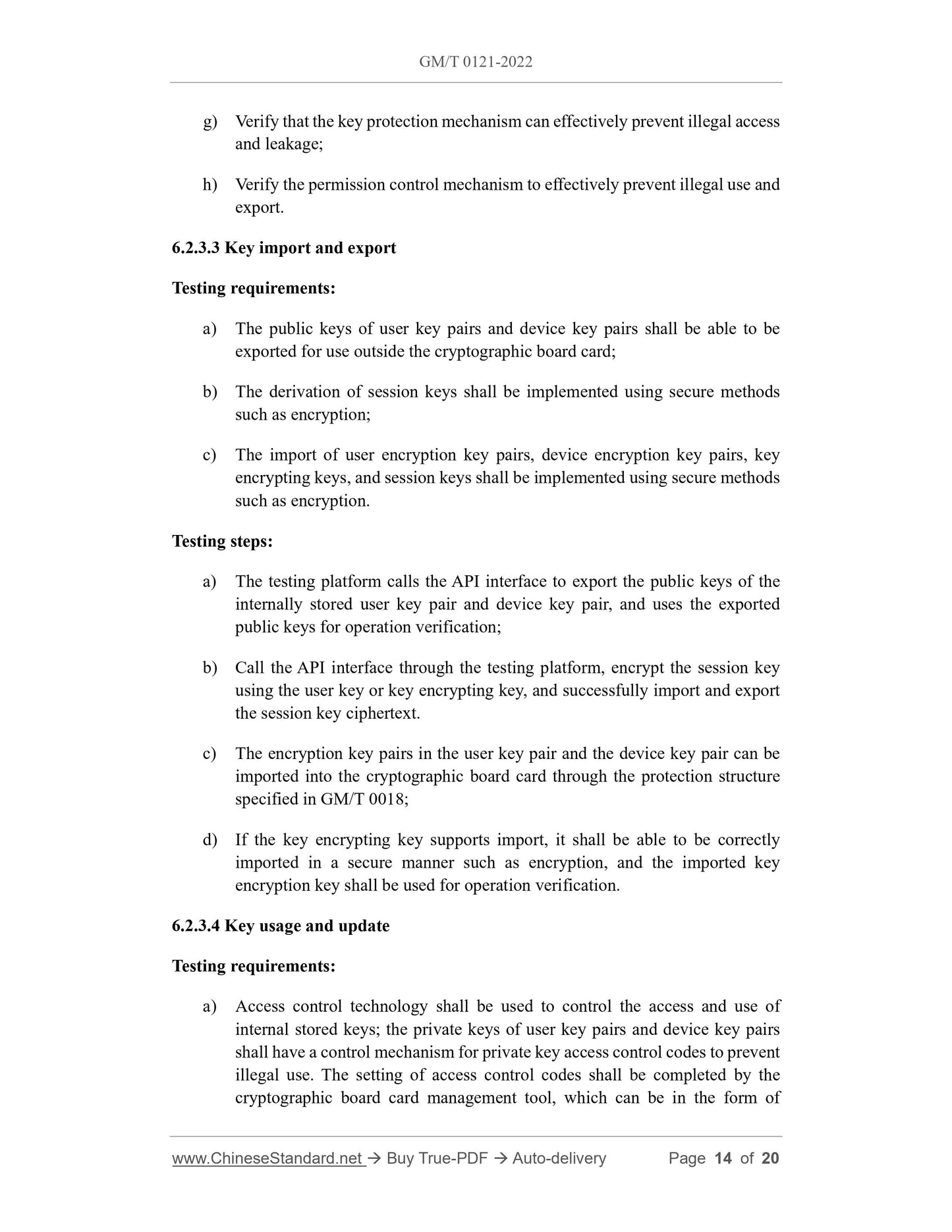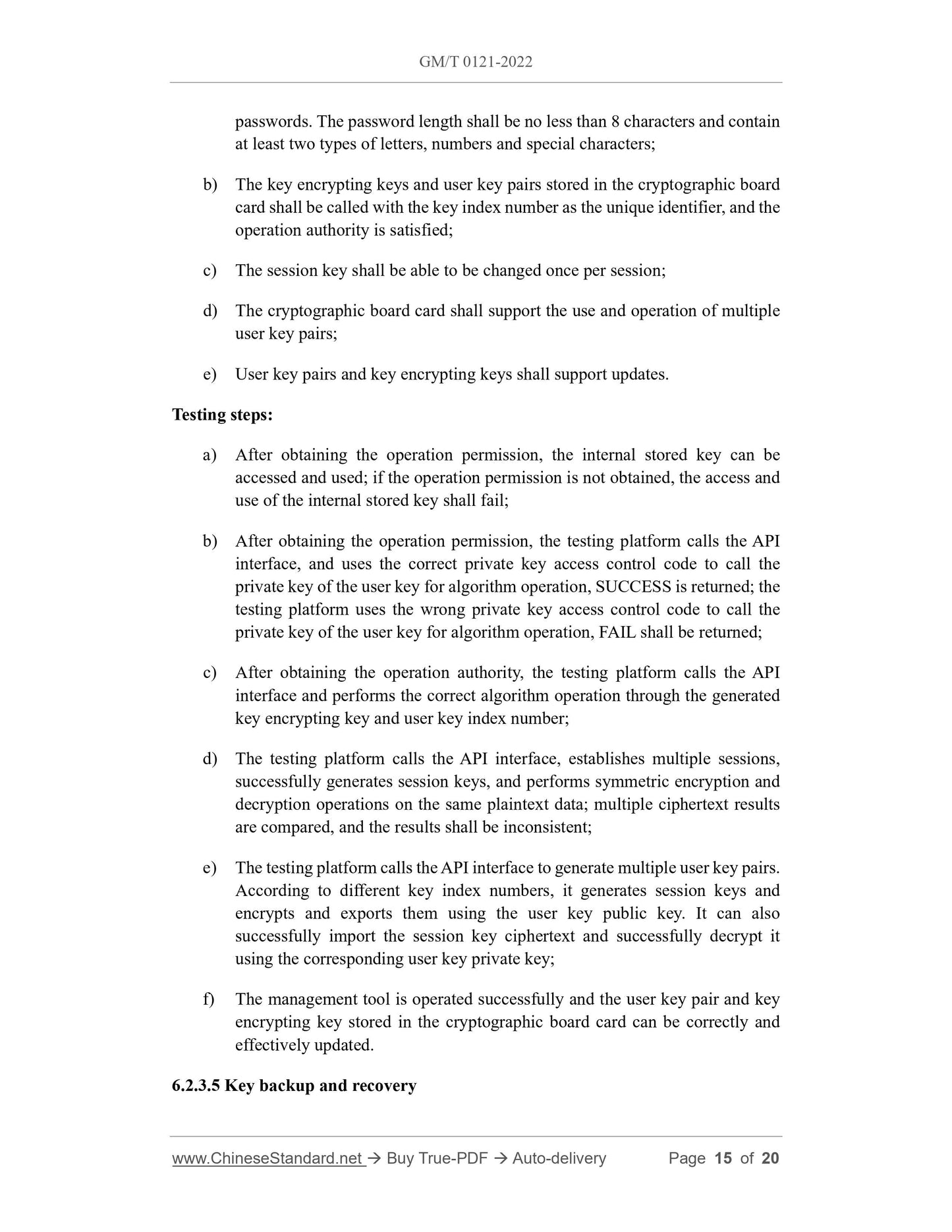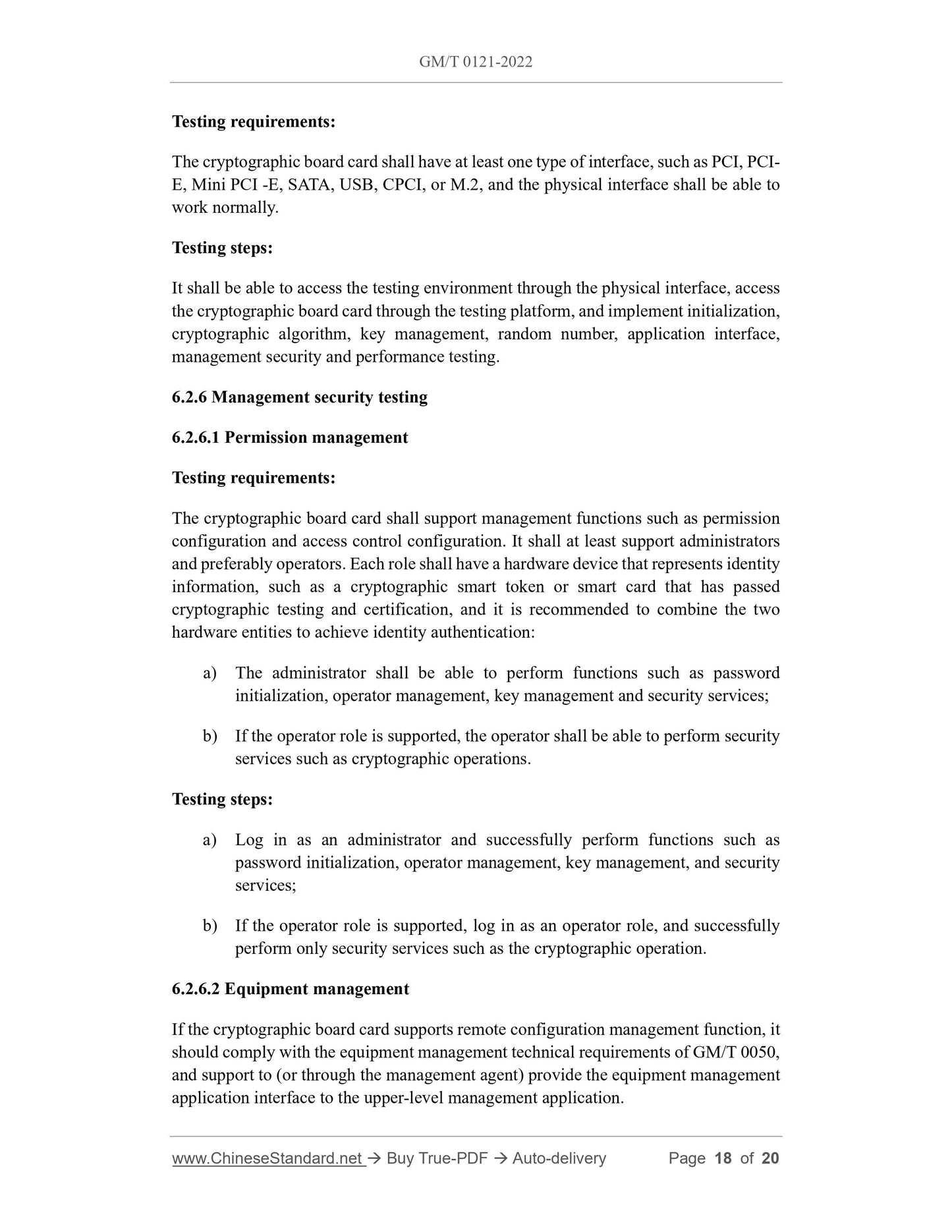1
/
of
11
www.ChineseStandard.us -- Field Test Asia Pte. Ltd.
GM/T 0121-2022 English PDF (GM/T0121-2022)
GM/T 0121-2022 English PDF (GM/T0121-2022)
Regular price
$245.00
Regular price
Sale price
$245.00
Unit price
/
per
Shipping calculated at checkout.
Couldn't load pickup availability
GM/T 0121-2022: Test specification for cryptographic board
Delivery: 9 seconds. Download (and Email) true-PDF + Invoice.Get Quotation: Click GM/T 0121-2022 (Self-service in 1-minute)
Newer / historical versions: GM/T 0121-2022
Preview True-PDF
Scope
This document specifies the testing content, testing methods, testing requirements anddocumentation requirements for cryptographic board cards.
This document is applicable to the testing of cryptographic board cards and the
development of such cryptographic devices, and can also be used to guide the
development of applications based on such cryptographic devices.
Basic Data
| Standard ID | GM/T 0121-2022 (GM/T0121-2022) |
| Description (Translated English) | Test specification for cryptographic board |
| Sector / Industry | Chinese Industry Standard (Recommended) |
| Classification of Chinese Standard | L80 |
| Word Count Estimation | 14,153 |
| Date of Issue | 2022-11-20 |
| Date of Implementation | 2023-06-01 |
| Issuing agency(ies) | State Administration of Cryptography |
Share
